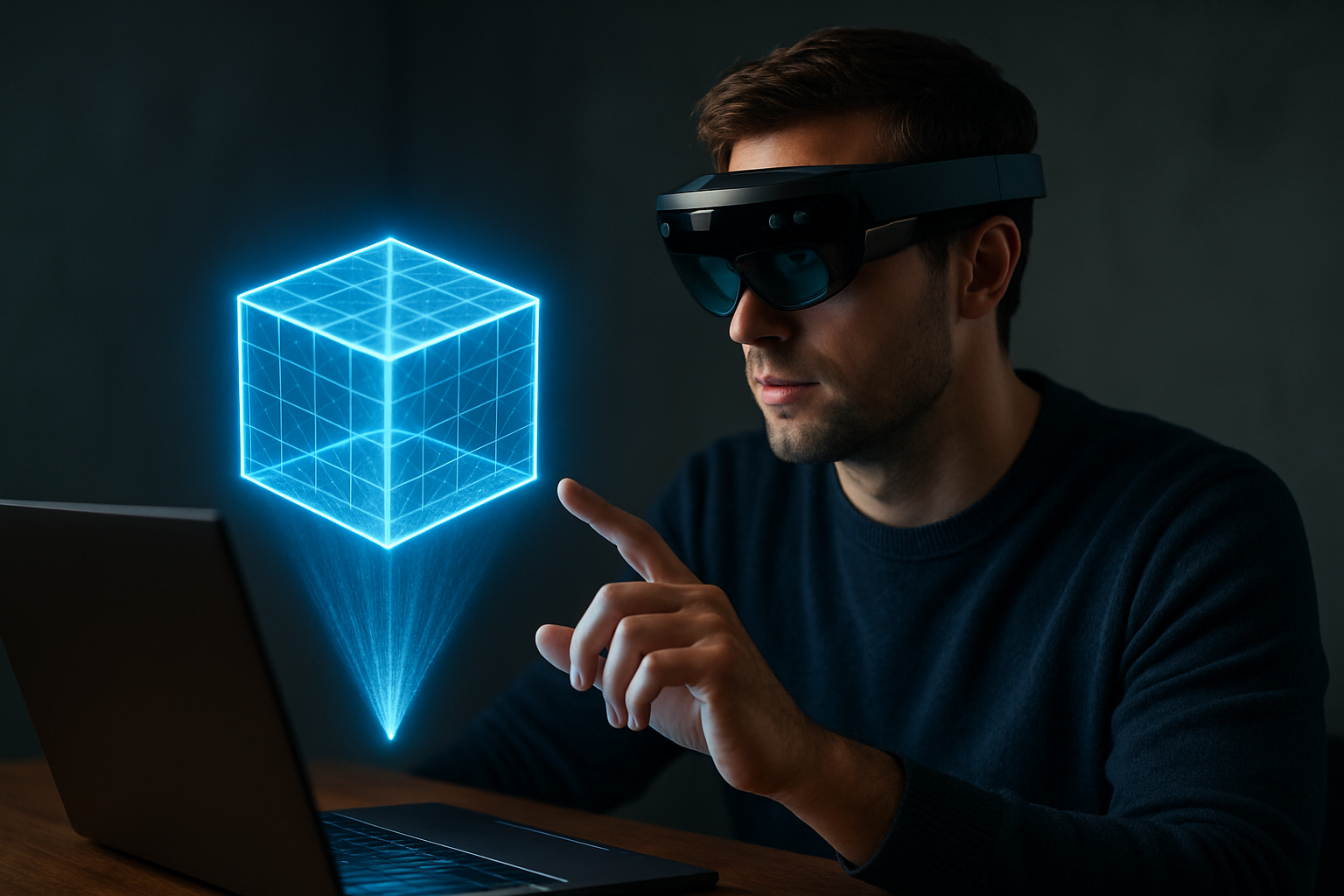Holographic Waveguides: The Next Frontier in AR Displays
Augmented reality (AR) is on the cusp of a major breakthrough, and holographic waveguides are at the forefront of this revolution. This cutting-edge technology promises to transform the way we interact with digital information, seamlessly blending the virtual and physical worlds. As tech giants and startups alike pour resources into developing more immersive and compact AR experiences, holographic waveguides are emerging as a key component in the race to create the perfect AR glasses.

The Science Behind Holographic Waveguides
At its core, a holographic waveguide is an optical component that uses principles of holography to guide light from a display source to the user’s eye. The waveguide itself is a thin, transparent piece of glass or plastic that contains microscopic holographic elements. These elements are designed to redirect light in specific ways, allowing images to be projected into the user’s field of view while maintaining transparency.
The process begins with a micro-display, typically an LCOS (Liquid Crystal on Silicon) or DLP (Digital Light Processing) chip, which generates the image. This image is then coupled into the waveguide using a small projector or coupling prism. Once inside the waveguide, the light travels along its length through total internal reflection, much like fiber optic cables.
Expanding the Field of View
One of the most significant advantages of holographic waveguides is their ability to expand the field of view (FOV) for AR displays. Traditional AR systems often suffer from limited FOV, which can create a “tunnel vision” effect and reduce immersion. Holographic waveguides can overcome this limitation by using multiple in-coupling and out-coupling zones along the waveguide.
By strategically placing these zones, developers can create larger virtual displays that extend beyond the physical dimensions of the waveguide itself. This technique, known as “pupil expansion,” allows for a much wider FOV without significantly increasing the size or weight of the AR device.
Enhancing Image Quality and Brightness
Another key benefit of holographic waveguides is their potential to improve image quality and brightness in AR displays. The holographic elements within the waveguide can be optimized to reduce color aberrations and improve contrast, resulting in sharper and more vibrant images.
Additionally, holographic waveguides can be designed to work with eye-tracking systems, allowing for dynamic adjustment of the exit pupil based on the user’s eye position. This feature, known as “eye-box expansion,” ensures that the displayed image remains clear and visible across a wider range of viewing angles.
Challenges and Ongoing Research
Despite their promise, holographic waveguides still face several challenges that researchers and engineers are working to overcome. One of the primary hurdles is the complexity of manufacturing high-quality holographic elements at scale. The process requires precise control over materials and fabrication techniques to ensure consistent performance across large production runs.
Another area of ongoing research is improving the efficiency of light transmission through the waveguide. Current systems can experience significant light loss as the image travels through the waveguide, resulting in dimmer displays. Scientists are exploring new materials and optimizing holographic designs to minimize these losses and increase overall brightness.
The Road to Commercialization
As the technology continues to mature, several companies are working to bring holographic waveguide-based AR displays to market. While exact pricing for consumer products is not yet available, industry analysts estimate that initial AR glasses utilizing this technology could range from $1,000 to $2,000, with prices expected to decrease as production scales up.
The potential market impact of holographic waveguide AR displays is substantial. According to recent reports, the global AR market is projected to reach $97.76 billion by 2028, with a compound annual growth rate of 48.6%. As holographic waveguide technology becomes more refined and cost-effective, it is likely to play a significant role in driving this growth and shaping the future of AR experiences.
Looking Ahead: The Future of AR Displays
As holographic waveguide technology continues to evolve, we can expect to see increasingly sophisticated AR displays that blur the line between the digital and physical worlds. Future developments may include:
-
Integration with advanced AI systems for more contextual and personalized AR experiences
-
Improved color reproduction and dynamic range, rivaling high-end traditional displays
-
Ultracompact designs that are indistinguishable from regular eyewear
-
Seamless integration with other emerging technologies, such as brain-computer interfaces
The journey of holographic waveguides from laboratory curiosity to commercial reality is a testament to the rapid pace of innovation in the AR space. As this technology matures and becomes more accessible, it has the potential to fundamentally change how we interact with information, entertainment, and the world around us. The future of AR is bright, and holographic waveguides are lighting the way forward.





